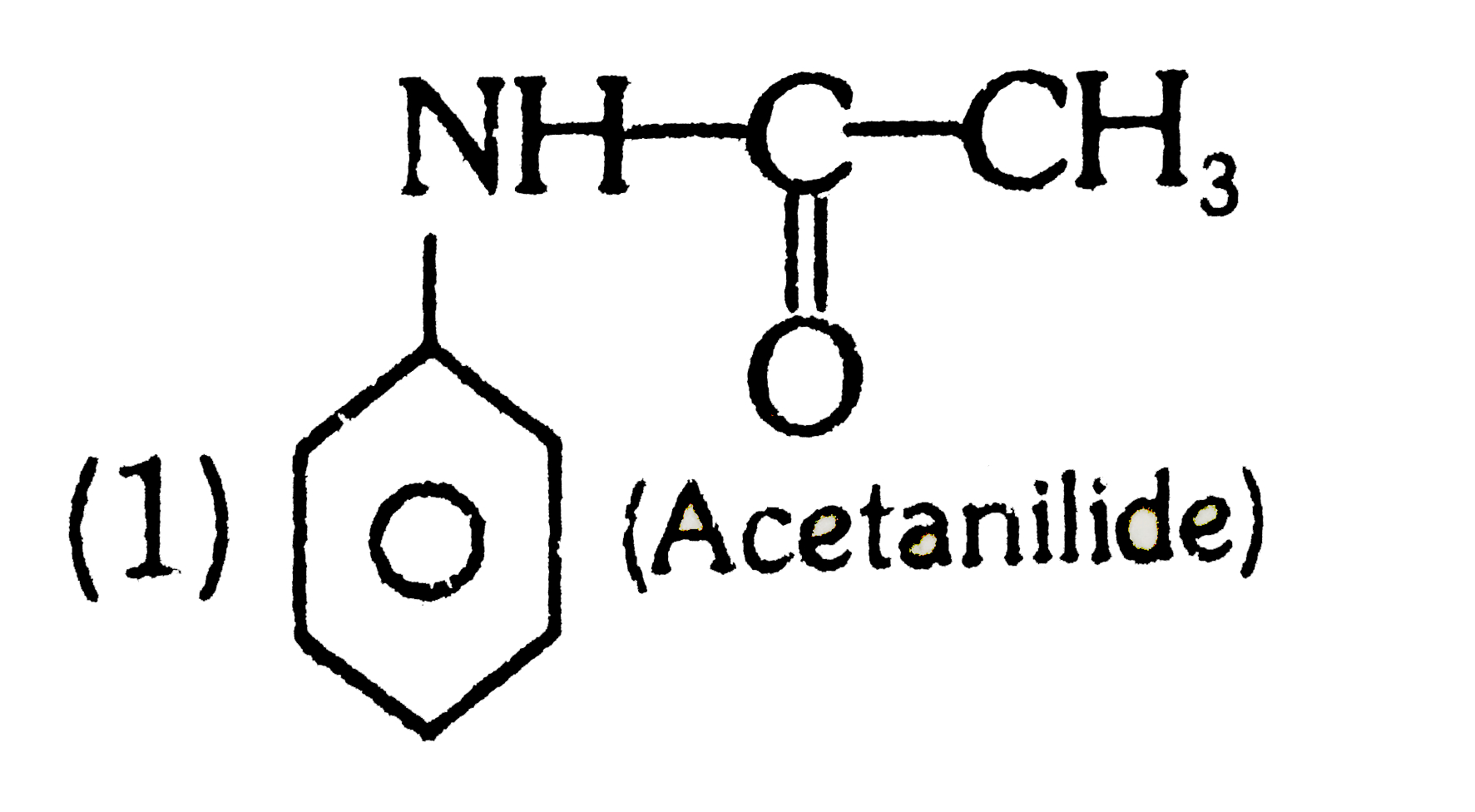Decomposition of H2O2 is retarded by :
2H2O2(l)→2H2O(l)+O2(g)

MnO2
Zn
Colloidal Ni
The correct Answer is:A
To solve the question regarding the decomposition of hydrogen peroxide (H₂O₂) and what retards this reaction, we can follow these steps:
Step 1: Understand the Reaction
The decomposition of hydrogen peroxide can be represented by the following chemical equation:
2H2O2(l)→2H2O(l)+O2(g)
Step 2: Identify the Inhibitors
Inhibitors are substances that slow down or prevent chemical reactions. In the context of the decomposition of H₂O₂, we need to identify which of the given options acts as an inhibitor.
Step 3: Analyze the Options
The options provided are:
1. Acetylilide
2. M1O2
3. Zn (Zinc)
4. Colloidal
5. Nickel
Step 4: Determine the Correct Answer
Among the options, acetylilide is known to act as an inhibitor for the decomposition of hydrogen peroxide. It slows down the reaction by preventing the breakdown of H₂O₂ into water and oxygen.
Step 5: Conclusion
Thus, the correct answer to the question is:
Acetylilide is the substance that retards the decomposition of hydrogen peroxide.
The decomposition of hydrogen peroxide can be represented by the following chemical equation:
2H2O2(l)→2H2O(l)+O2(g)
Inhibitors are substances that slow down or prevent chemical reactions. In the context of the decomposition of H₂O₂, we need to identify which of the given options acts as an inhibitor.
The options provided are:
1. Acetylilide
2. M1O2
3. Zn (Zinc)
4. Colloidal
5. Nickel
Among the options, acetylilide is known to act as an inhibitor for the decomposition of hydrogen peroxide. It slows down the reaction by preventing the breakdown of H₂O₂ into water and oxygen.
Thus, the correct answer to the question is:
Acetylilide is the substance that retards the decomposition of hydrogen peroxide.
Topper's Solved these Questions
- HYDROGENBOOK - ALLENCHAPTER - HYDROGENEXERCISE - EXERCISE-4
40 Videos
- HYDROGENBOOK - ALLENCHAPTER - HYDROGENEXERCISE - EXERCISE-5
17 Videos
- HYDROGENBOOK - ALLENCHAPTER - HYDROGENEXERCISE - EXERCISE-2
21 Videos
- HYDROCARBONBOOK - ALLENCHAPTER - HYDROCARBONEXERCISE - MCQ
15 Videos
- INORGANIC CHEMISTRYBOOK - ALLENCHAPTER - INORGANIC CHEMISTRYEXERCISE - METALLURGY
22 Videos
Similar Questions
Decomposition of H2O2can be prevented by :
View SolutionSpeed of decomposition of H2O2 is reduced by :
View SolutionThe strength of H2O2 is expressed in several ways like molarity, normality,% (w/V), volume strength, etc. The strength of "10 V" means 1 volume of H2O2 on decomposition gives 10 volumes of oxygen at 1 atm and 273 K or 1 litre of H2O2gives 10 litre of O2 at 1 atm and 273 K The decomposition of H2O2 is shown as under :
H2O2(aq)→H2O(l)+12O2(g)
H2O2 can acts as oxidising as well as reducing agent. As oxidizing agent H2O2 is converted into H2O and as reducing agent H2O2 is converted into O2. For both cases its n-factor is 2. ∴Normality ofH2O2 "solution" =2×molarity ofH2O2 solution
20mL of H2O2 solution is reacted with 80 mL of 0.05 MKMnO4 "in acidic medium then what is the volume strength of" H2O2 ?
View SolutionThe strength of H2O2 is expressed in several ways like molarity, normality,% (w/V), volume strength, etc. The strength of "10 V" means 1 volume of H2O2 on decomposition gives 10 volumes of oxygen at 1 atm and 273 K or 1 litre of H2O2gives 10 litre of O2 at 1 atm and 273 K The decomposition of H2O2 is shown as under :
H2O2(aq)→H2O(l)+12O2(g)
H2O2 can acts as oxidising as well as reducing agent. As oxidizing agent H2O2 is converted into H2O and as reducing agent H2O2 is converted into O2. For both cases its n-factor is 2. ∴Normality ofH2O2 " solution " =2×molarity ofH2O2 solution
40 g Ba(MnO4)2 (mol.mass=375) sample containing some inert impurities in acidic medium completely reacts with 125 mL of "33.6 V" of H2O2. What is the percentage purity of the sample ?
View SolutionThe strength of H2O2 is expressed in several ways like molarity, normality,% (w/V), volume strength, etc. The strength of "10 V" means 1 volume of H2O2 on decomposition gives 10 volumes of oxygen at 1 atm and 273 K or 1 litre of H2O2gives 10 litre of O2 at 1 atm and 273 K The decomposition of H2O2 is shown as under :
H2O2(aq)→H2O(l)+12O2(g)
H2O2 can acts as oxidising as well as reducing agent. As oxidizing agent H2O2 is converted into H2O and as reducing agent H2O2 is converted into O2. For both cases its n-factor is 2. ∴Normality of H2O2 solution =2×molarity ofH2O2 solution
What is thepercentage strength (%w/V) of "11.2 V" H2O2
View SolutionThe strength of H2O2 is expressed in several ways like molarity, normality,% (w/V), volume strength, etc. The strength of "10 V" means 1 volume of H2O2 on decomposition gives 10 volumes of oxygen at 1 atm and 273 K or 1 litre of H2O2gives 10 litre of O2 at 1 atm and 273 K The decomposition of H2O2 is shown as under :
H2O2(aq)→H2O(l)+12O2(g)
H2O2 can acts as oxidising as well as reducing agent. As oxidizing agent H2O2 is converted into H2O and as reducing agent H2O2 is converted into O2. For both cases its n-factor is 2. ∴Normality ofH2O2 " solution " =2× molarity ofH2O2 solution
What is the molarity of "11.2 V" H2O2 ?
View SolutionIn the reaction
2H2O2→2H2O+O2
View SolutionMarshall's acid (H2S2O8) or peroxodisulphuric acid is prepared by the electrolytic oxidation of mmolH2SO4 as :
2H2SO4→H2S2O8+2H⊕+2e−
O2(g) and H2(g) are obtained as byproducts. In such electrolysis 4.48L of H2(g) and 1.12L or O2(g) were produced at STP. The weight of H2S2O8 formed is
a.9.7g b.19.4g c.14.5g d.29.1g
View SolutionCalculate the standard internal energy change for the following reactions at 25∘C:
2H2O2(l)→2H2O(l)+O2(g)
ΔfHΘat25∘C for H2O2(l)=−188kJmol−1H2O(l)=−286kJmol−1
View SolutionMarshell's acid is prepared by the electrolytic oxidation of H2SO4 as
2H2SO4→H2S2O8+2H⊕+2e−
Oxygen and hydrogen are byproducts. In such electrolysis 2.24L of H2 and 0.56L of O2 were product at STP. The weight of H2S2O8 fromed is
View Solution
